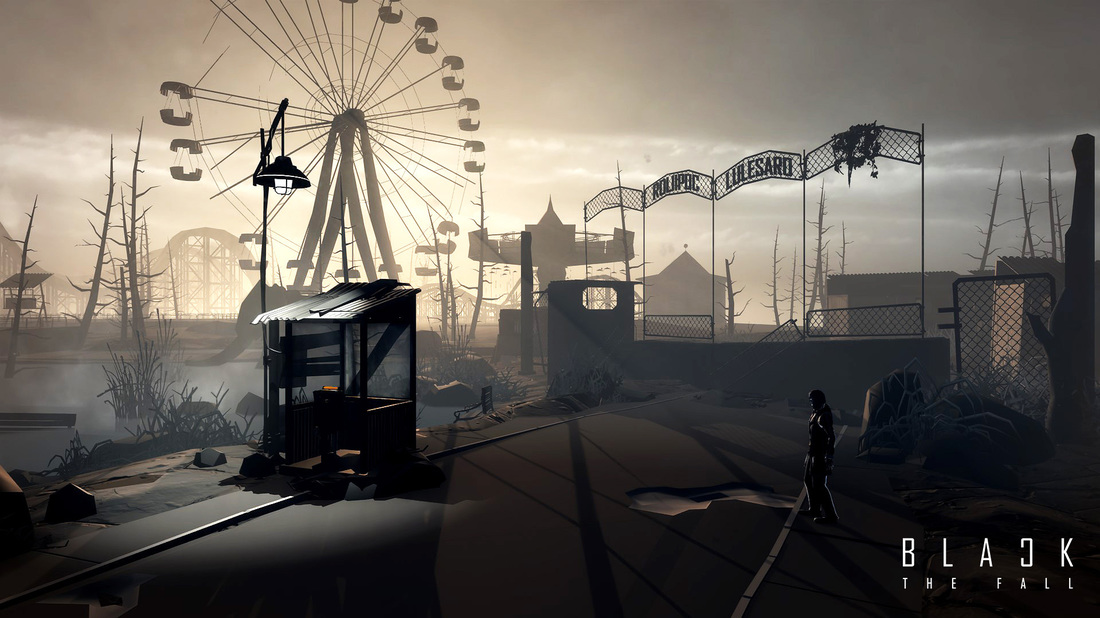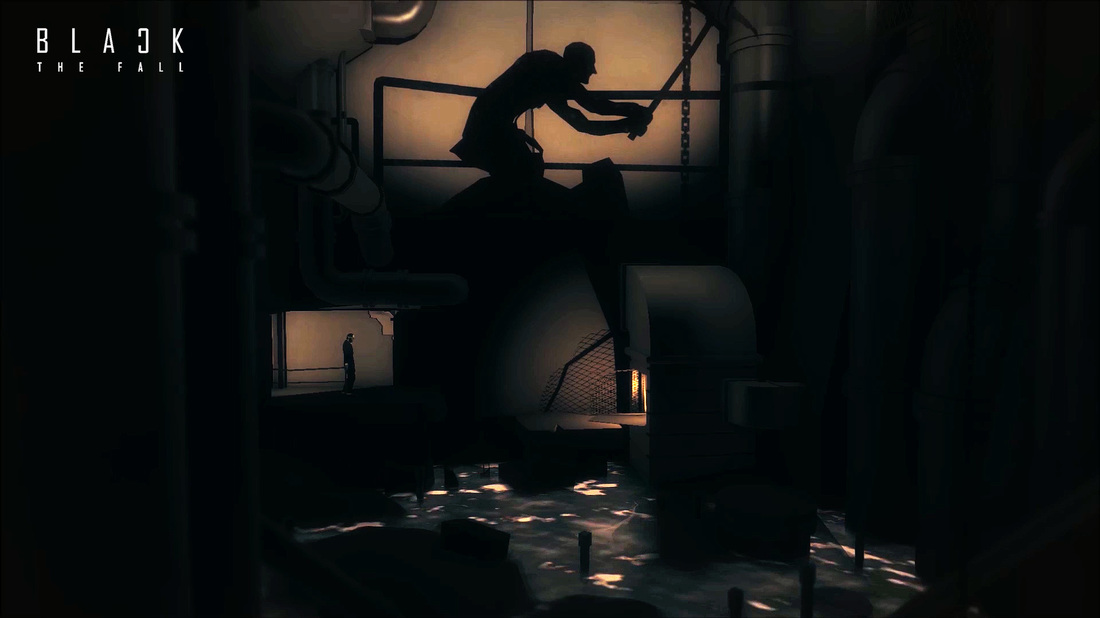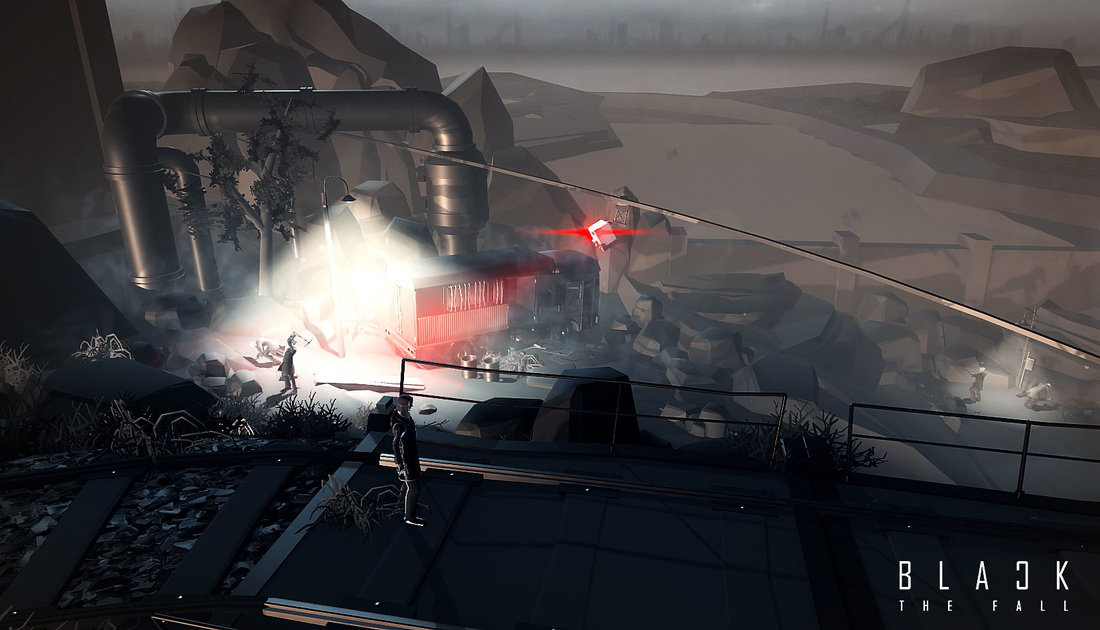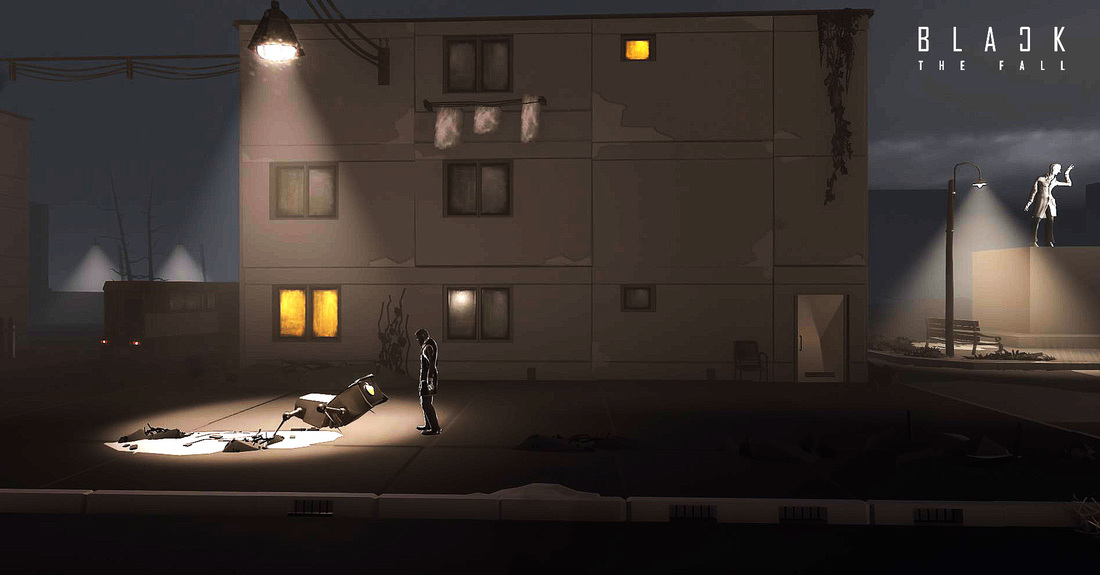The creative process is seldom a steep curve from zero to awesome. There are times when every week brings new scenes, amazing details, quirky characters and brilliant puzzles, shaping the game identity. But there are also times, when you get stuck, losing the overall view, or you get in a loop of granular polishing, that hinders progressing with the overall project. Sort of a writer’s block, but for level designers.
A few months ago, we were in a similar situation, working on our game, Black The Fall. So Cristi gathered us around for a paradigm shift or What To Do When the Level Design Team is Stuck.

I. Stop right now and look back. It’s true that you see this scene every day and you already know what’s missing, what it needs; you simply know it in and out. You and your scene are stuck together and you both haven’t seen anyone else for a while, not even your friends. It’s time to take some space and breathe.
II. Analyze the scene like it’s the first time you’re seeing it. And here is where we can help with a checklist or set of questions to go through when evaluating it.
1. PURPOSE

Question 1: What do YOU want from this chapter?
What do you want from this scene or puzzle?
Is your intention clearly expressed?
Does it come from personal experience or is this something that does not relate to you?
Clue: Working on something that does not reflect you and your intentions will be time consuming and probably less valuable to both you and the player. So, whenever you are assigned a chapter/scene/puzzle go around it for a few hours or days, if needed, until you find a way to illustrate your own intentions there. This way you’ll have a clear purpose and drive.
Question 2: What do you want the player to feel?
What’s the atmosphere of this chapter/scene?
How could you convey an atmosphere to match the established purpose?
Is the sound rendering the right atmosphere?
Clue: You’re designing the feeling roller-coaster a player will go through. So make it worthwhile.
Looking for dynamism – use diagonals
Looking for tranquillity, safety – use rounded shapes
Is the scene too crowded – maybe illumination can save it.
Question 3: Would you have this in the final game?
Is this chapter / scene making the game better?
Clue 3: If you’re proud of it and honestly think that it makes for one of the best parts of the game, then move on to the next one. Congrats!
If you’re not there yet, then keep reading.
2. PLAYER EXPERIENCE

Question 1: Are all puzzle elements visible?
Clue: If they’re not, the player will get frustrated with the game and it’s not going to be his fault.
Question 2: Why should the player solve the puzzle the way you intend it?
Why shouldn't it be solved any other way?
Is this the most rewarding option, from the player’s perspective?
Clue: Each minute of the experience should be worth it. So choose the smoothest path for the player and the most relevant for the pace and atmosphere you need in that scene.
Question 3: Is the proper pacing?
Where’s the player coming from? What was his pace when he entered the scene?
Static vs. dynamic
Clue: Anything that disturbs or interrupts the pacing must be eliminated. [If we find unnecessary heights we fix them, but not by adding small boxes.]
Think: Always have in mind the minute to minute experience of the player. He deserves the right amount of awesome.
3. COMPOSITION

Question 1: Are the cameras revealing the best the scene has to offer?
Is the camera cutting off important elements?
Is this scene an artistic composition you’d be proud of showcasing?
Clue: Framing and perspective are part of the composition. They can make it average or amazing, so always try various camera movements and settle on the best option.
Question 2: Does this scene has a unique mood, while respecting the overall atmosphere?
Clue: To be compelling, a game needs to have a consistent atmosphere. But this doesn’t mean creating the same monotonous mood throughout the whole game. Each scene needs to have its own unique mood and all of them c




































